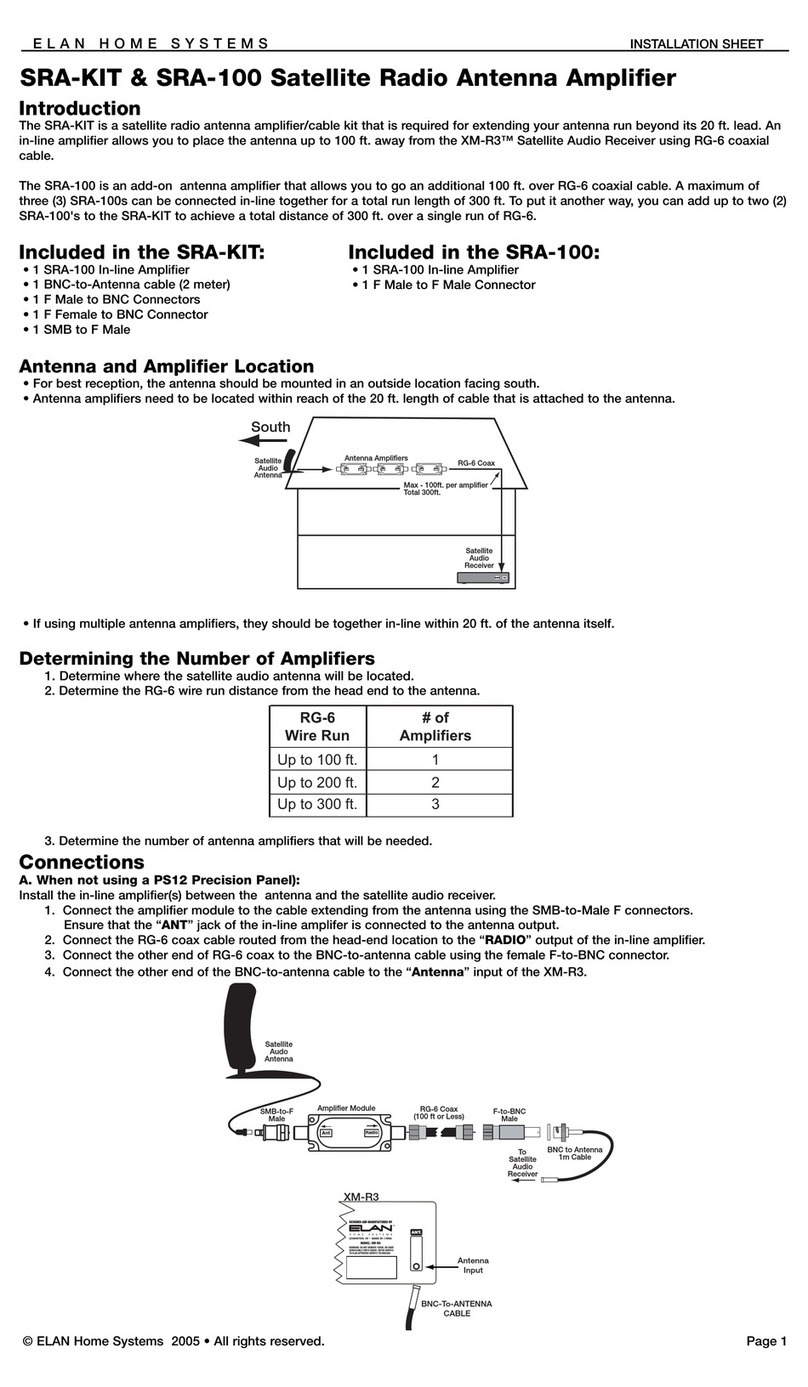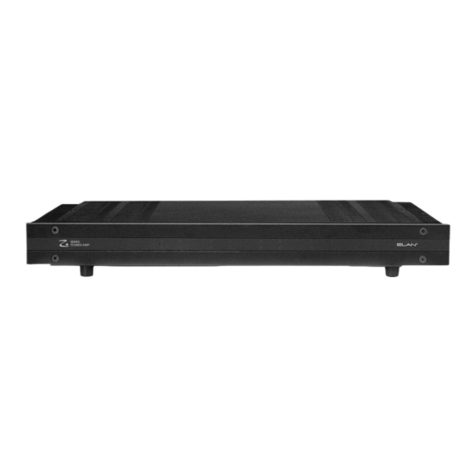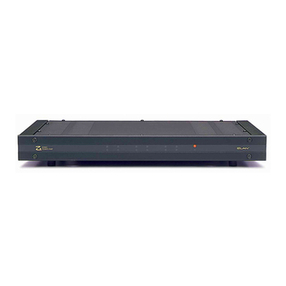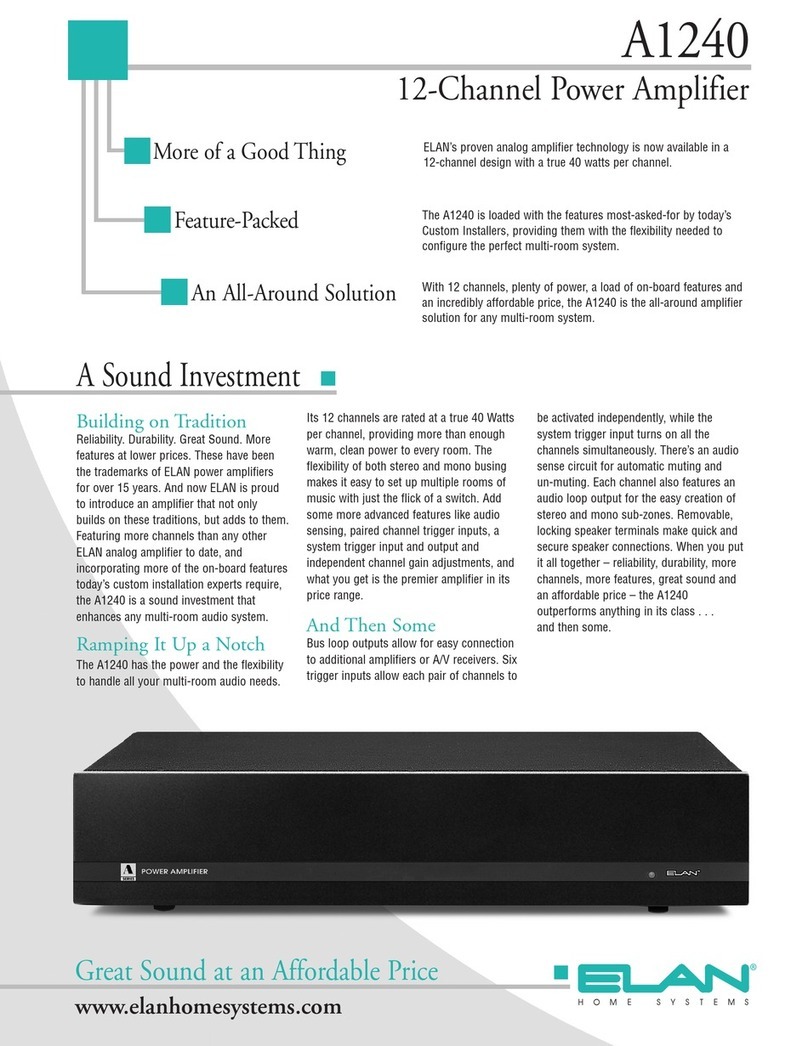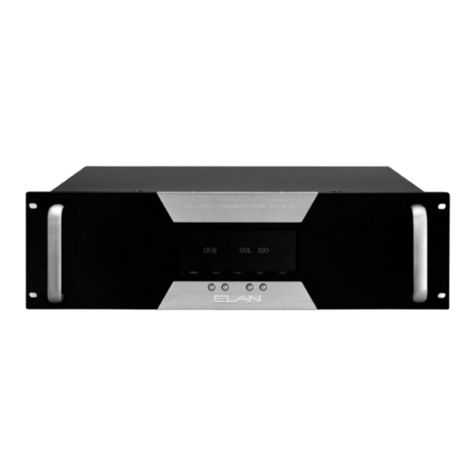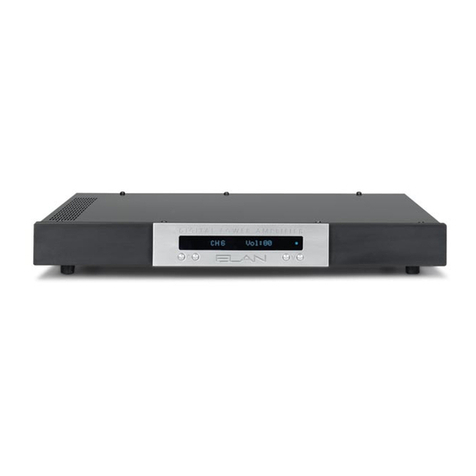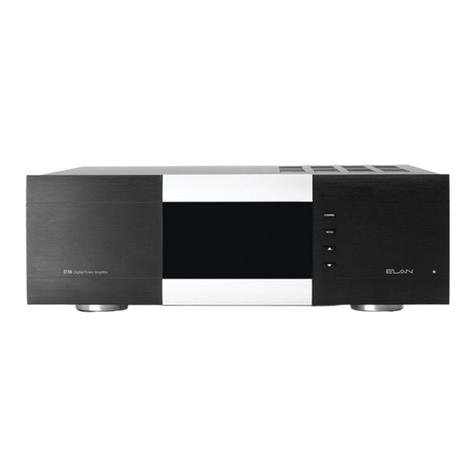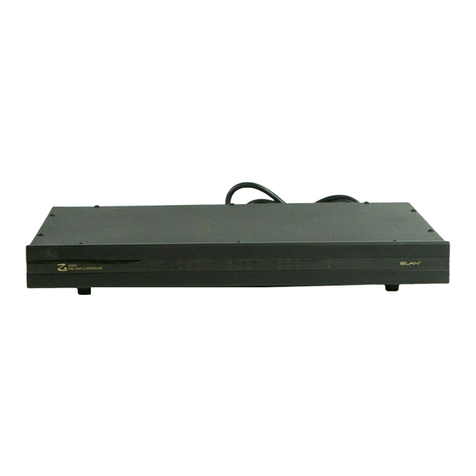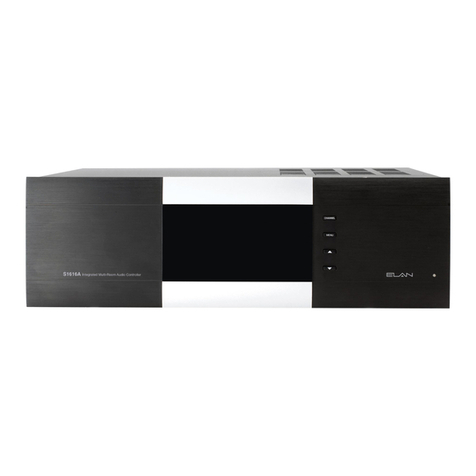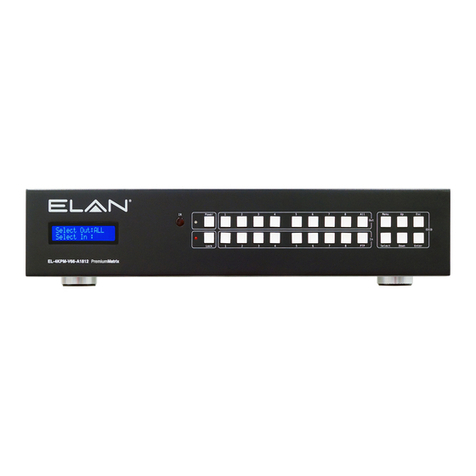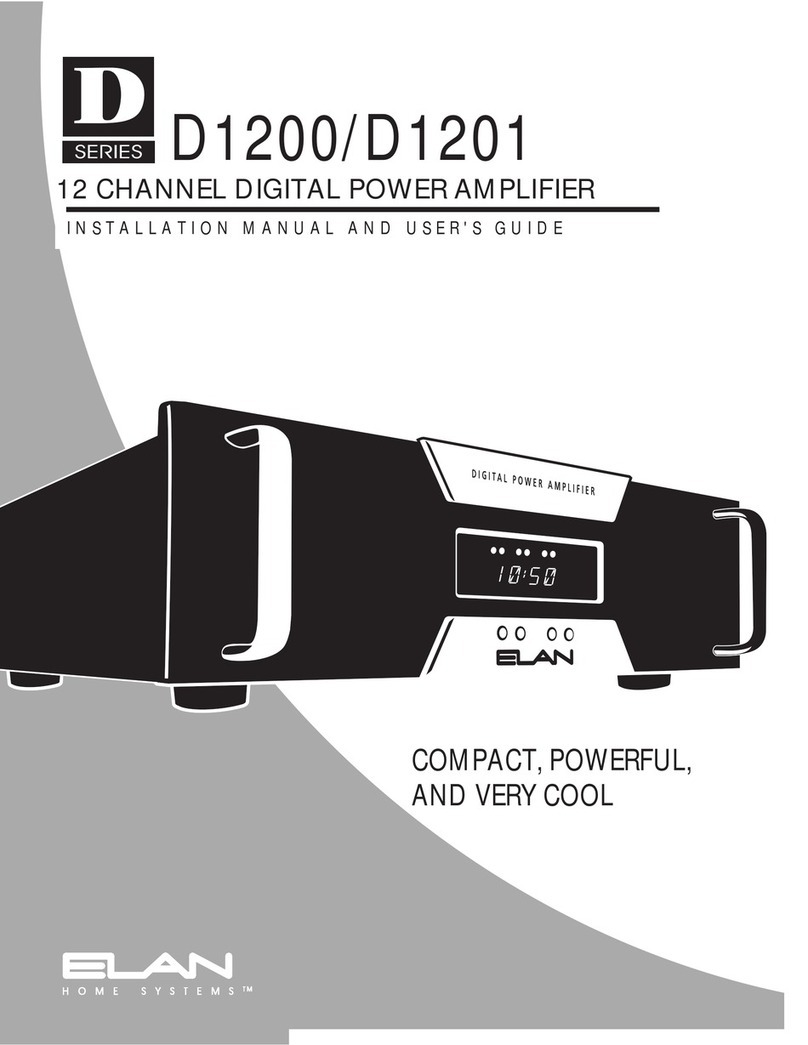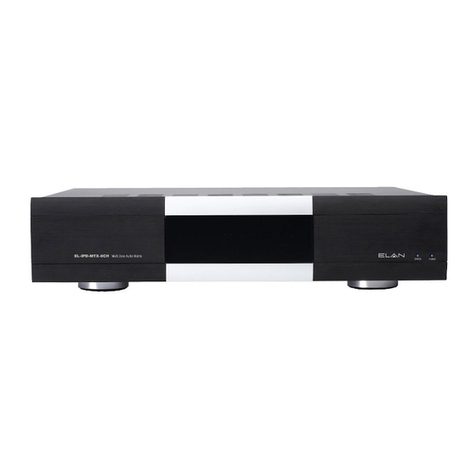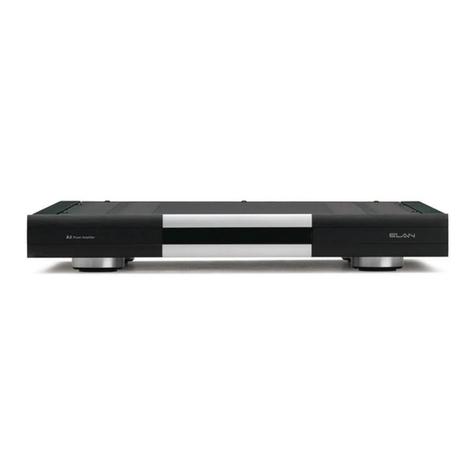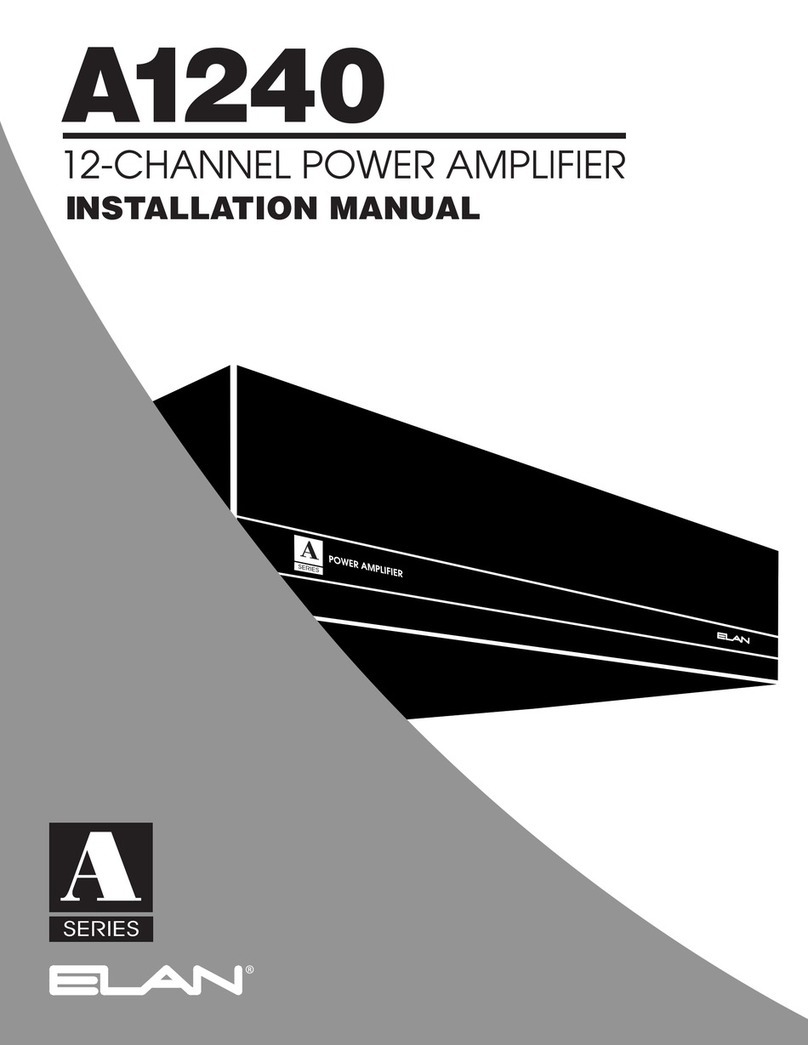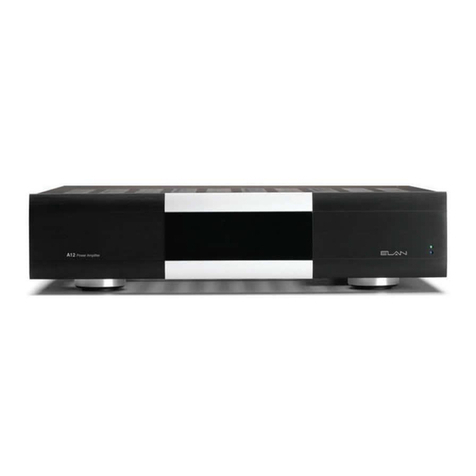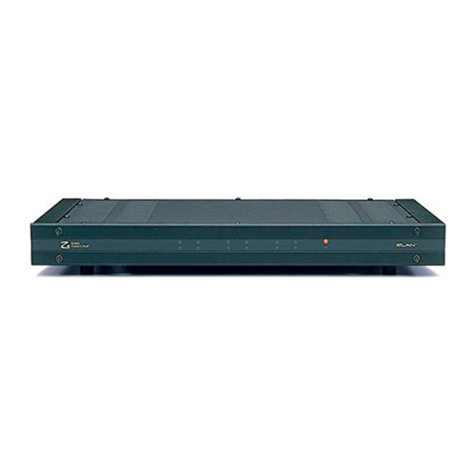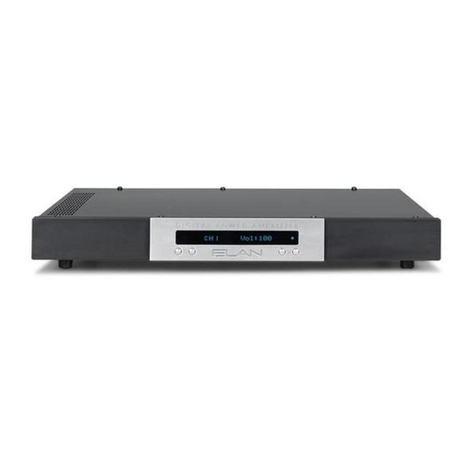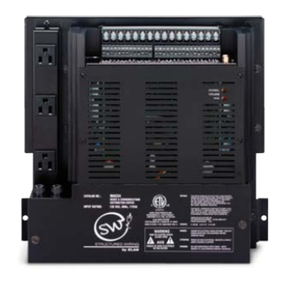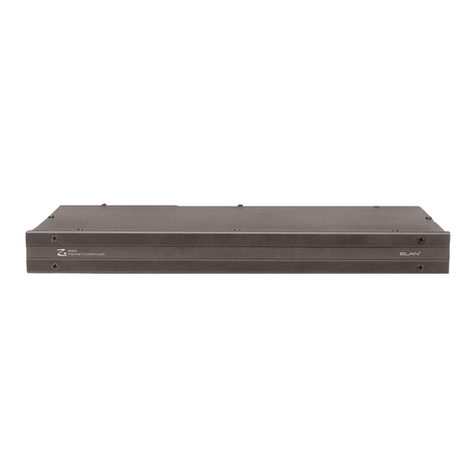ELAN HOME SYSTEMS
© ELAN Home Systems 2005 • All rights reserved. Page 7
D660/D661 INSTALLATION MANUAL
‘Class-T’ Digital Technology
Explained
The ultimate objective of any audio amplifier
design is to make a high fidelity amp with high
efficiency and high reliability. There are several
basic audio power amp topologies that have been
developed to attain these objectives: Class-A,
Class-B, Class-AB, Class-H, Class-G and
Class-D are the most common. The D660 uti-
lizes proprietary Class-T topology from Tripath™.
Class-T combines the best attributes of several of
these designs and minimizes deficiencies in each
design, as well.
Class-A, Class-B and Class-AB amps have been
around for over fifty years. Basically, these clas-
sifications designate the amount of time that the
amp’s output devices conduct during one full cycle
of a periodic signal. Class-A amps are in a state
of conduction 100% of the time. Class-B amps
have a complimentary pair of outputs, which are
biased so that each output is conducting only 50%
of the time. Class-AB amps also have complimen-
tary output pairs but they are biased so that each
output is conducting slightly more than 50% of the
time: this lowers crossover distortion. The vast
majority of audio amps in use today are Class-AB.
A well-designed Class-AB amplifier has good lin-
earity (high fidelity) and poor efficiency (less than
50%). Class-H and Class-G are both voltage-sup-
ply varying techniques which are usually applied to
Class-AB type, linear amplifiers. These techniques
give marginal improvement in efficiency at the cost
of a more complex and less reliable power supply.
Class-D amplifiers use output devices which
switch on and off at a fixed frequency. This fre-
quency is usually more than ten times higher than
the highest frequency to be amplified. A passive
filter reconstructs the wave form passing through
the amplifier and removes switching artifacts
that distort sound. Class-D amplifiers use output
devices that are either ON or OFF; never in a state
of mid-conduction. This mid-conduction state is
what causes linear switching amplifiers to be as
inefficient as they are (less than 50% efficiency).
Class-D amplifiers are approximately 85% efficient:
a 35% increase!
As mentioned, each of these amplifier designs
has drawbacks. Class-D amps have tendencies
toward high distortion rates. Crossover distor-
tion, ground bounce, and high frequency artifacts
create most of the distortion in these designs.
Imperfectly matched transistors lead to inexact
ON/OFF timing results and crossover distortion
issues. Ground Bounce caused by high-current
switching of the output transistors manifests itself
as noise on the audio output. In some Class-D
amplifiers, this high-frequency noise is not com-
pletely filtered out, resulting in high frequency
distortion.
Advantages of Class-T Design
Class-T is a combination of Adaptive Digital Signal
Processing and Spread-Spectrum Switching. This
design takes the efficiency of a Class D amp and
combines it with the fidelity of a Class AB amplifier
by dramatically improving signal integrity.
Class-T offers the following improvements over
Class-D:
1. Class-D has a fixed output switching frequency.
Class-T has an adaptive switching frequency
which is dependent upon both input signal
frequency and magnitude. Switching artifacts
are removed in this way, reducing distortion.
The switching signal is constantly being
optimized to match the input signal in order to
yield the highest possible fidelity.
2. Class-D amplifiers have nominal switching
frequencies between 200kHz and 300kHz which
creates artifacts in the 20 to 50kHz audio band.
This can be heard as audible noise. Class-T
amplifiers have nominal switching frequencies
between 600kHz and 700kHz; artifacts from this
frequency are not audible.
3. Class-T design constantly monitors the output
transistors and adaptively corrects for varia-
tions between and within these transistors.
The Class-T design also monitors and corrects
for ground bounce that the transistors produce
when switching large currents.
4. Typical power efficiency with a Class-T amplifier
is 85% (unreachable by Class-AB amps).Typical
THD + Noise is less than 0.04% (unreachable
by Class-D amps.) Truly the best of both worlds!
D660Manual9_1_05.indd 7D660Manual9_1_05.indd 7 9/1/2005 12:53:22 PM9/1/2005 12:53:22 PM
